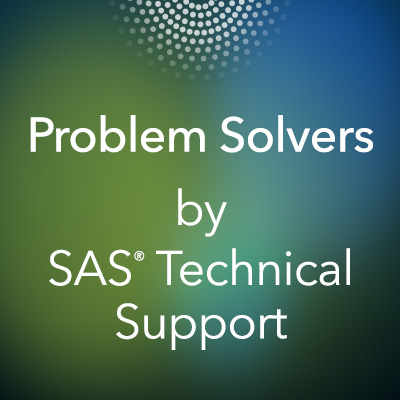Why business controllers are becoming citizen with SAS® data scientists?
The unfolding digital economy is impacting not just the way companies engage with their customers, but also how businesses are internally managing themselves. The business control function needs to keep pace, and many business controllers I meet think there is now a demand for Controller 2.0. But what is this exactly?
Much depends on the conceptual control approach you think is “right”. Both in theory and in practice, different companies show clear differences in control systems’ scope. I am also seeing the rising importance of analytical capability in defining the role of the modern controller. But while execution of analytics can vary; key questions remain on: what are the options and what do we need to understand to decide the best way forward.
Increasing role of analysis
The processing, analysis and interpretation of data is a core discipline of a business controller and requires technical, analytical and professional know-how across a range of interdisciplinary topics. However, it is noticeable that there is a certain amount of overlap between a definition of a (business) controller and an arbitrary definition of a data scientist. Does this mean that controllers have to be data scientists?
The answer is no, but digitization in many control departments does call for some changes. It is not enough to make your reports prettier or more colourful. Instead, it means developing and using new methods of data analysis, such as (real) analytics, to gain new and valuable insights, and therefore create a decisive competitive advantage.
How can an experienced controller make use of analytics without needing data scientist support? Excel? R? Something from the cloud? If you Google Controlling+Analytics, you get over 10 million hits. It sounds like endless possibilities are available, but where and how do you start? One easy-to-access and intuitive option is visual data exploration. Intelligent visualizations can elicit new and valuable information from data. This can be achieved in four steps, depending on the database, analytical knowledge and maturity level.
Step 1: Business question
Before doing any analysis, you should always ask why, and identify which data should be analysed for what purpose. For example, do you have hypotheses that you want to check? What outcome is desired? Which insights would be valuable?
Step 2: Data exploration
On the basis of your questions, you can then start to explore your existing data. First, you need to check the data. Is the quality good enough (for example, are there missing values, or uniform category expressions)? Are suitable analysis variables in the right format (for example, time or geo data) and structure (clear hierarchies, perhaps)? Can the necessary metrics be calculated from the existing ones? What patterns are recognizable?
Step 3: Analytical modelling
Analytical modelling is particularly exciting. Can you derive a model that describes, for example, customer behavior or production quality? Driver analyses can be used to find out which factors influence certain target variables such as sales or costs. Using cluster analysis, for example, homogeneous customer segments can be identified, and then analysed individually. Modern business analytics tools enable the user to create a simple model at a visual level, from exploratory analysis. A basic statistical knowledge is helpful, but you do not need to be an expert in the methods or algorithms.
Step 4: Advanced Analytics (Data Science)
Depending on your degree of analytical maturity, you can develop your analysis even further. More complex procedures and detailed settings can be used. A deeper understanding of statistical procedures is necessary, but you do not need to be able to code an appropriate model yourself. There are graphical tools that enable easy use of advanced analytics techniques. It is even possible to industrialise analytics, so that individual analyses are becoming productive processes.
Embracing new skills: the controller as a citizen data scientist:
Steps 1 and 2 are traditional controlling activities. Using suitable visualization methods, the controller can find out first insights quickly and easily. Steps 3 and 4 have emerged as control requirements in digitalized businesses.
But this is not the end of the line. Analytical procedures for modelling are already being used in control departments. The statistical possibilities of the tools are seldom fully exploited, but this is improving. Tomorrow’s controller will have a role as a business partner and will work much more analytically. Concurrently with this, the number of analytical questions is growing much faster than the number of data scientists.Therefore I encourage you to talk to business analytics experts and take the analytics into your own hands.
Email us: info@epoch.co.in
SAS Training & Placement Programs with Internship*:
Epoch Research Institute India
Largest and Oldest SAS Training Institute
Epoch Research Institute Links:
Epoch | Facebook | Twitter | LinkedIn
Epoch Research Institute India Pvt. Ltd.
Ahmedabad | Bengaluru | Chennai
+91 79 40327000|+91 80 49077000|+91 44 42641500
SAS Training & Placement Programs with Internship*:
Epoch Research Institute India
Largest and Oldest SAS Training Institute
Epoch Research Institute Links:
Epoch | Facebook | Twitter | LinkedIn
Epoch Research Institute India Pvt. Ltd.
Ahmedabad | Bengaluru | Chennai
+91 79 40327000|+91 80 49077000|+91 44 42641500
Epoch Research Institute Links:
http://www.epoch.co.in/
https://www.facebook.com/EpochResearchInstitute
https://twitter.com/epochresearch
https://www.linkedin.com/company/epoch-research-institute-india-pvt-ltd-
http://www.epoch.co.in/
https://www.facebook.com/EpochResearchInstitute
https://twitter.com/epochresearch
https://www.linkedin.com/company/epoch-research-institute-india-pvt-ltd-


No comments:
Post a Comment